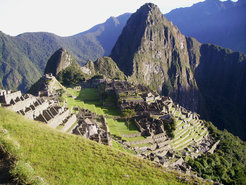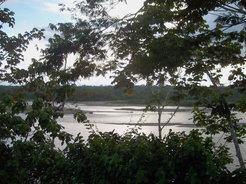Human Genetic Diversity of South America Reveals Complex History of Amazonia
New study explores genetic roots of 26 populations from diverse regions and cultures of western South America and Mexico, revealing long-distance connections between speakers of related languages, and new traces of genetic diversity within Amazonia.

Map with the locations covered in the study. Newly released data are shown together with published data from existing literature.
An extensive new collaborative study between scientists and research institutes in Europe, the USA, Mexico, Ecuador, Colombia and Peru, and bringing together geneticists, linguists and anthropologists, sheds new light on the population history of South America. The study, which involved working closely with local populations in many different regions of the continent, was published in Molecular Biology and Evolution. The results confirm the impacts of large, complex societies already known from archaeological evidence, but also reveal previously unknown migrations and connections across great distances, including within Amazonia, a vast area not yet so intensively studied archaeologically.

Genetic studies have played a fundamental role in understanding the population history of the American continent. By reconciling genetic evidence with the archaeological record and with paleoclimatic data, scientists have been able to pinpoint the time and scale of the earliest migrations, possible routes through the continent, the subsequent formation of population structure, and preferential routes of population migration and contact. Yet the picture is necessarily superficial because of the lack of representative data from all the diverse regions of the continent. One recurrent simplification relies on the contrast between the Andes, site of the famous large complex societies of the Wari, Tiahuanaco and Inca who built a vast network of roads, and Amazonia, where people apparently have been living in small isolated groups. The Pacific Coast, key player in the earliest migration routes and theatre of other large-scale societies (like the Moche and Chimú, among others) is not properly incorporated in this traditional model.
"We wanted to put more focus not just on deep population prehistory, but also on the fine-grained, complex events taking place during the periods both before and after European contact. So we conducted fieldwork in a diverse range of regions within South America, collecting new samples from rural populations of different cultural backgrounds. In our analyses we concentrated on signals of contact and shared ancestry, trying to find exceptions to the established models of diversity across the continent", explains Chiara Barbieri, a geneticist from the Max Planck Institute for the Science of Human History in Jena now working at the University of Zurich, and lead author of the study.

"On a continental scale, one of the main findings is a new and distinct ancestry component in Amazonia, reported at high frequencies in some populations in regions of Ecuador and Colombia close to the eastern slopes of the Andes. This genetic component, previously undetected, may have begun to differentiate over 4000 years ago from other ancestry components, including the dominant components both elsewhere in Amazonia, and on the Pacific Coast and in the Andean highlands. This has implications for our understanding of the early migrations and population structure of the continent, and suggests that human diversity in Amazonia is higher than we thought", adds Barbieri.
On a local scale, the high-resolution genomic data generated by this study make it possible to distinguish fine-grained cases of genetic exchange that attest to population contacts. These exchanges connect populations hundreds of kilometers apart, and in different ecogeographic domains. "Connections have been found between different groups who speak languages of the Quechua family, widespread in the Andes and in small pockets in Amazonia. On the other hand, in two Amazonian regions of Peru (Loreto and San Martín), populations are genetically very close to speakers of the Amazonian language Cocama in lowland Colombia. These genetic signatures suggest that in these instances, languages diffused by movements of actual people rather than by cultural diffusion alone", explain José Sandoval and Ricardo Fujita of the University of San Martín de Porres in Lima, Peru, co-authors on the study.

Finally, the genetic analyses show demographic signals of large population sizes both in the Andes and on the North Coast of Peru, as expected from archaeology given the scale of state organisation reached in these regions. Signatures of relatively large populations are also found in a few groups in Amazonia, however, in line with the latest archaeological interpretations that human societies reached greater scales than has traditionally been envisaged here, where the archaeological record is much less visible and less well preserved. Lars Fehren-Schmitz, a biological anthropologist at the University of California, Santa Cruz, who contributed to the study, concludes, "Taken together, these findings enrich our understanding of the diversity and complex ancestries of people from Amazonia and how they interacted with neighboring regions of the Andes. The genetic inheritance of South Americans today still bears traces of important, formative events before the historical record began with the European invasion."



